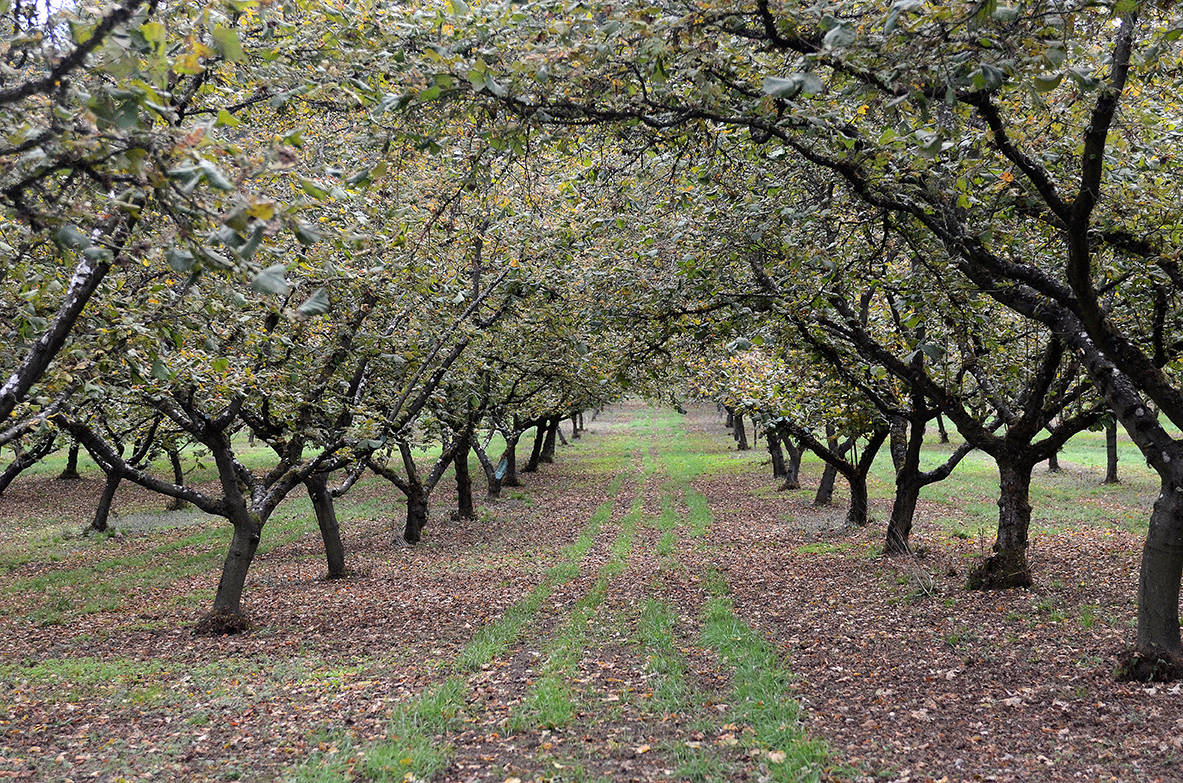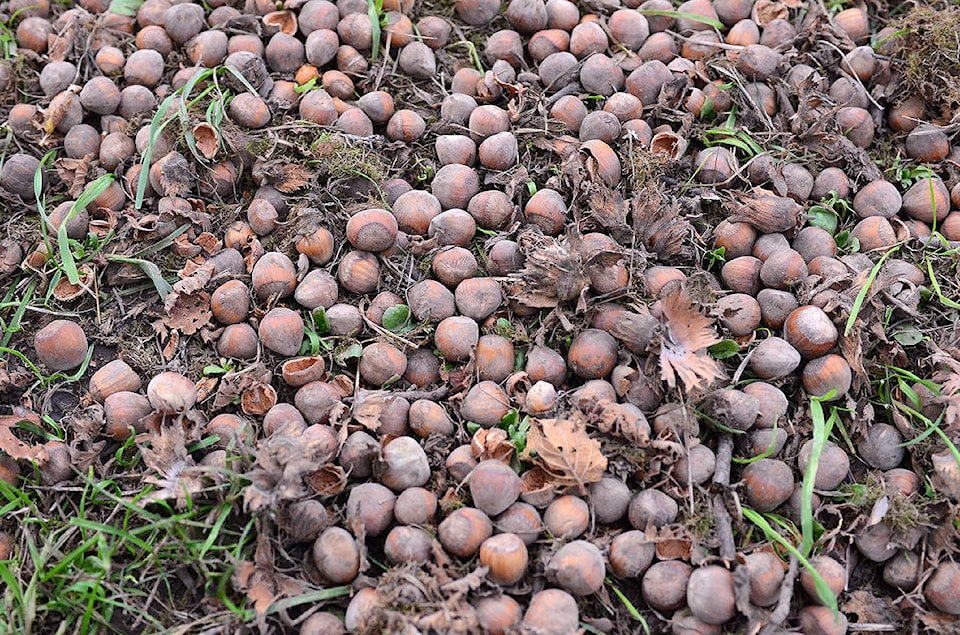A fungus has been decimating hazelnut orchards throughout B.C. for several years, reaching Vancouver Island and the Cowichan Valley more recently, but the provincial Ministry of Agriculture is taking steps to help growers battle it.
Eastern filbert blight was first noticed in B.C. in 2003, and arrived on Vancouver Island around 2015, doing devastating damage to the burgeoning hazelnut industry in the province. Earlier this year, the Ministry of Agriculture announced $300,000 in funding over the next three years to help growers replace hundreds of acres of dead and diseased orchards with EFB-resistant varieties.
“Hazelnut growers in B.C. have faced major setbacks over the past decade, but this funding will help regrow and revitalize a sector that has enormous possibilities,” Minister of Agriculture Lana Popham said. “This funding will help bring processing opportunities that add value to farmers, and offers consumers more B.C. products. My mandate includes Grow BC, and that includes hazelnuts.”
Grow BC was established to support the fruit and nut growers, and processors, to expand local food production and to help young farmers access land. Grow BC offers targeted programs, such as the Hazelnut Renewal Program, to make sure the people who are passionate about working in agriculture have opportunities to work within the sector.
BC Hazelnut Growers Association board of directors member Walter Esau was pleased with Popham’s announcement.
“This announcement is a very welcome and exciting step in the re-establishment and expansion of a promising industry in British Columbia,” he said. “The BC Hazelnut Growers Association has worked hard over the past decade to keep a once thriving industry alive, and with the help of the B.C. government, this is being made possible. We are excited about the future of hazelnuts in B.C., and welcome any enquiries about our industry.”
Darby Wade of Wade’s Hazelnut Farm in Chemainus will be among those welcoming the provincial program.
“We just discovered [EFB] this year,” Wade said. “We’re in the process of evaluating the damage. We will likely be replacing a number of trees. That’s the most effective solution.”
It is possible to control EFB to an extent by cutting back branches, but that’s not always the optimal solution. Growers can also use fungicides, many of which are acceptable even for organic farming.
“Most organic-certifying bodies will allow you to use them,” said Dr. Thom O’Dell, another member of the BCHGA board, who has operated his own nursery (Nature Tech Nursery in Courtenay) since 2010 and was a consulting biologist for a trial of new hazelnut varieties that finished in 2017.
EFB can effect producing trees, ornamentals and volunteer trees that spring up on their own, something hazelnut trees are particularly good at. The disease caused the yield in B.C. to drop from one million pounds to less than 30,000, although the industry is now climbing back out of that hole.
“There are hundreds of varieties of hazelnuts, but the old ones are particularly susceptible [to EFB],” O’Dell said. “And those were the ones widely planted.”
The new, EFB-resistant varieties are coming from a breeding program in Oregon, where the Willamette Valley produces 99 per cent of the U.S. crop and about three to five per cent the global crop. O’Dell believes the new varieties are very promising.
“The varieties we have right now are pretty good,” he said.
According to O’Dell, there are a lot of reasons hazelnuts make for a great crop in B.C., including their ease of harvesting, the province’s ideal climate and soil conditions, and the fact that the trees are efficient at sequestering carbon and the nuts serve as a high-quality alternative protein source.
“Hazelnuts are in demand,” he said. “They’re a great crop for part-time farmers.
“I’m really bullish on the crop. It’s got a lot going for it.”

